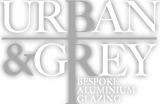Skylights remain very popular with our customers. It’s not hard to see why: they look great, can improve the value of the home and even help cut down energy bills once they’re installed.
Because of this, we’ve been asked a couple of times about the limits: just how many skylights can be installed on a standard flat roof?
Well, here’s the answer.
The main issue with skylight construction – as with any form of building work – is the building regulations themselves. These UK building laws apply directly to skylights and their limits, so we’ll go through the important details here.
First things first: there IS a limit.
A finite amount of any standard roof can be glass and in that situation the glass has to be double-glazing and low-emissivity.
We’re going to assume that if you’re considering a skylight, you probably aren’t interested in a totally glass roof. Indeed, only 12 per cent of the surface of the average London house is made of glass, according to the latest research.
So what’s the upper limit?
For that, we have to turn to Building Regulations Part 1LB.
When it comes to glazing, this is the key building regulation and states that the total glazed area of any main extension cannot exceed 25 per cent of the new area.
It’s worth noting that this 25 per cent limit INCLUDES already existing doors and windows, so if you’ve already had an extension installed with double glass doors and large windows, for instance, you might then struggle to have a skylight installed as well.
However, you should always consult a product expert if you’re unsure – the experienced and friendly Urban & Grey team can help you establish if you’re within the limits.
Aren’t there any exceptions to this?
Yes, there are. However, getting an exemption will mean demonstrating your property’s ‘green’ credentials.
If you can demonstrate that the CO2 output of your home – known as it’s ‘carbon footprint’ – will be equal or lower to the level it would have if the 25 per cent limit had been followed, then you may be given permission to install the skylight.
Note: Government environmental targets often change, so your carbon targets could go down. It’s important to take this into account, though, of course, high-quality skylights will usually use glazing with excellent thermal performance.
Do I actually need planning permission for a standard skylight?
Usually no, though again the company responsible for installing it should help with this.
Typically, you do NOT need planning permission for inserting new roof windows in a standard home providing the legal limits and conditions are met.
What are the limits?
- Alterations may not project more than 150 millimetres from the existing roof panes
- No alteration can be taller than the highest part of the existing roof
- Side-facing windows must be obscure-glazed, and openings must be made at least 1.7 metres above the floor
- (It’s also worth checking out the Article 4 Direction, which restricts certain works).
- Inserting a roof window is typically considered a ‘material’ alteration under the building regulations.
Get in touch
If you’re at all unsure how the building regulations will affect your skylight, give Urban & Grey a call today on 020 8003 6674 – we’ll be happy to help you.

